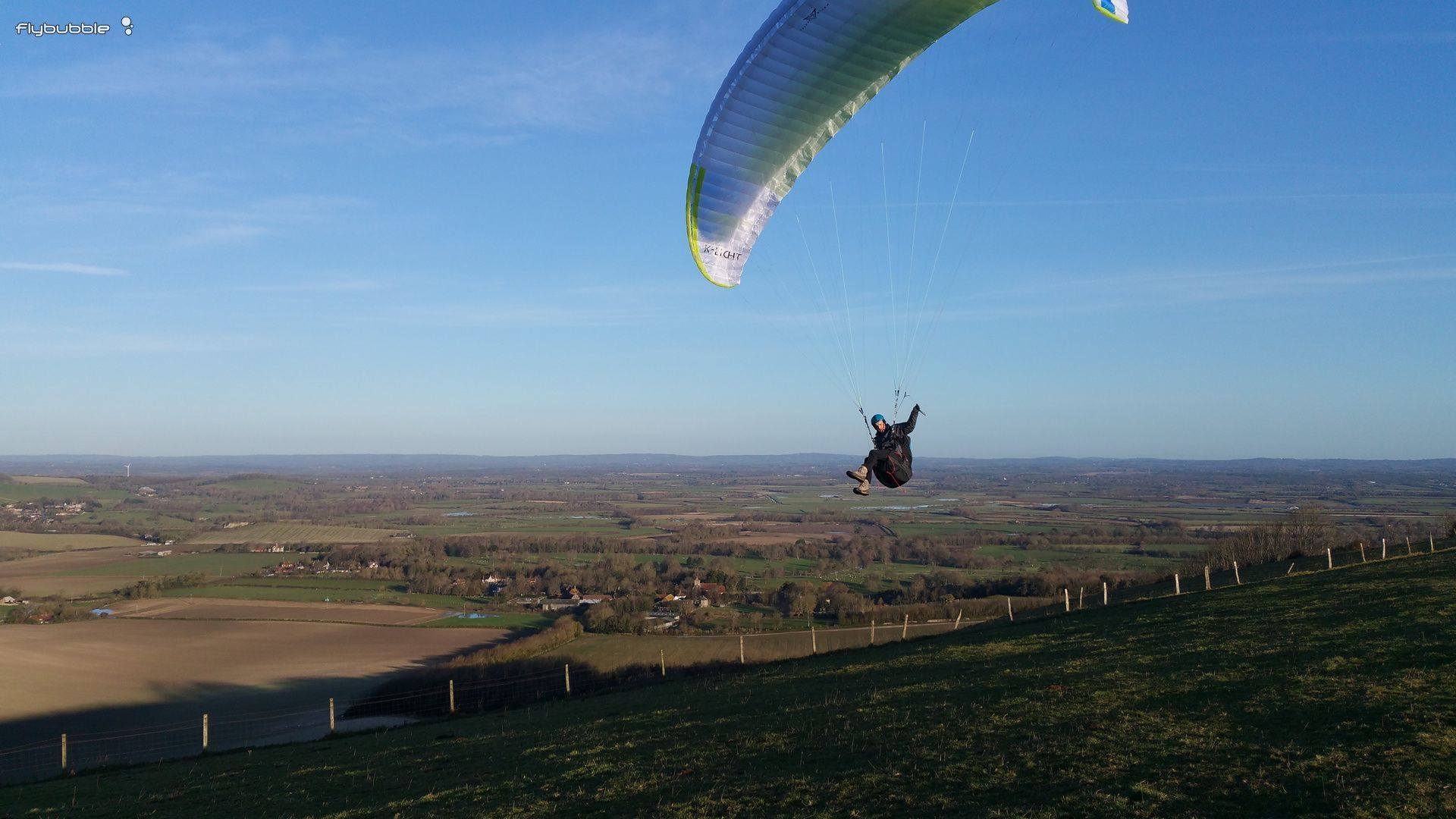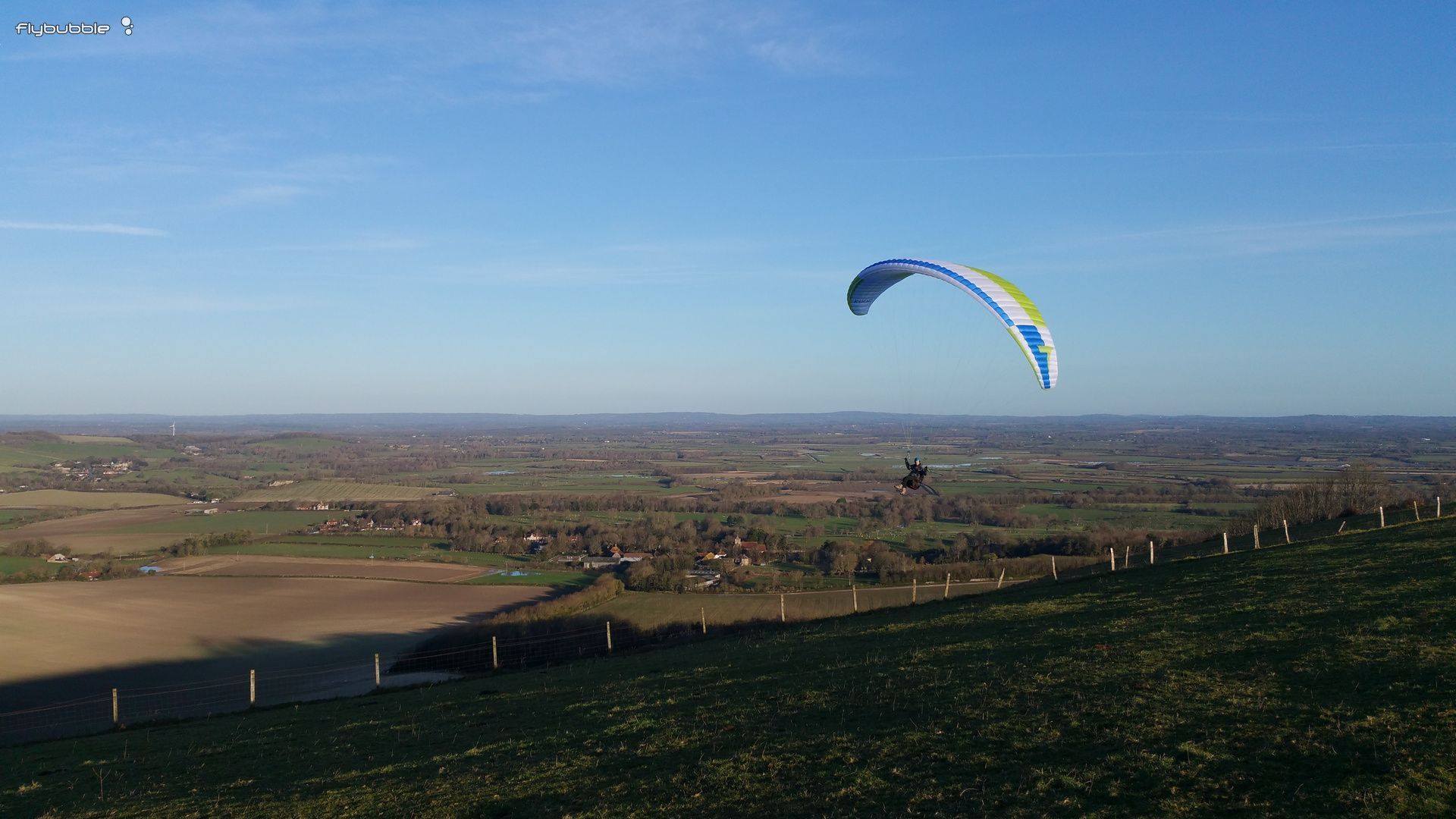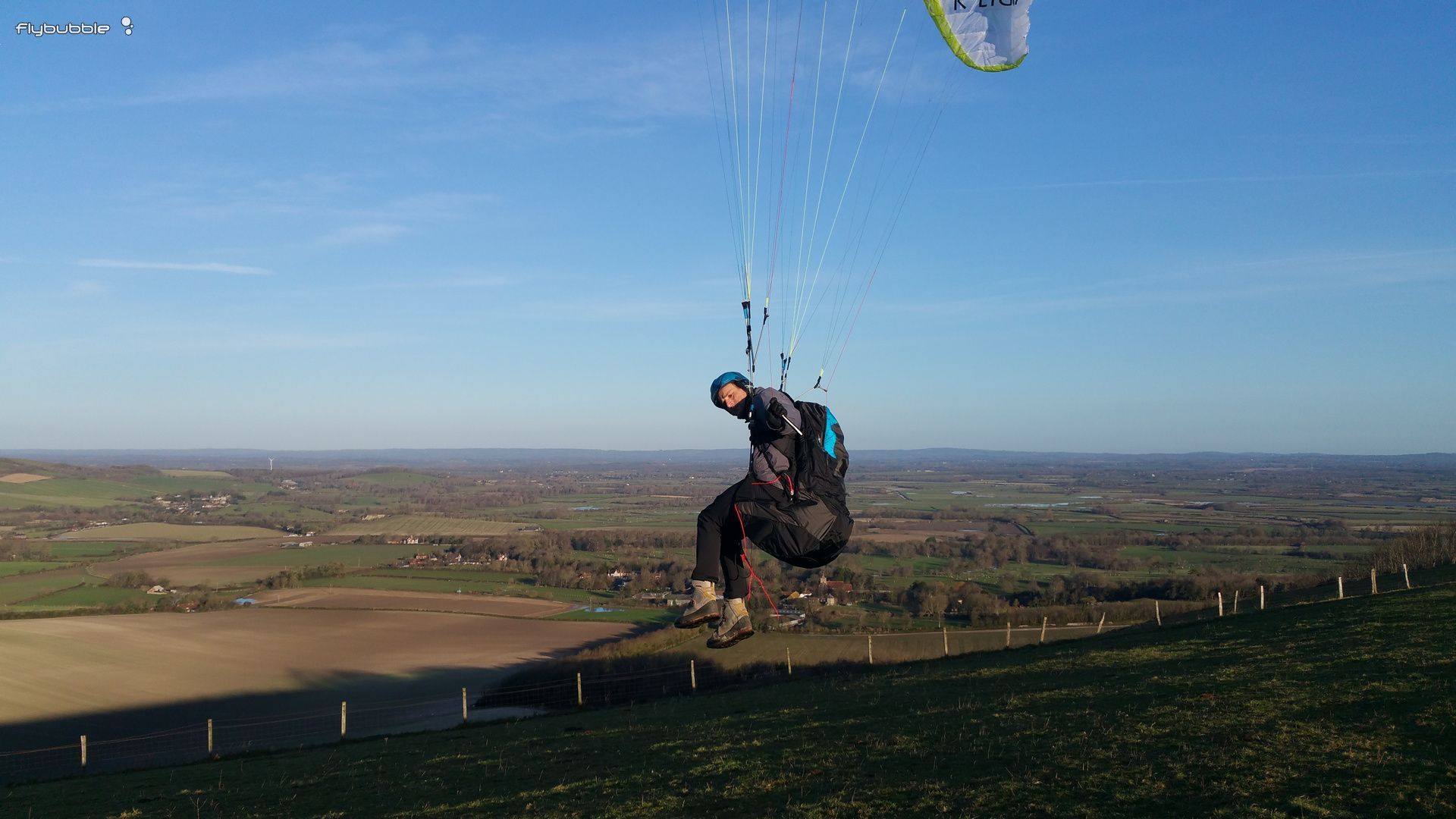
On hills and coastal sites, paraglider pilots usually prefer to top land. Easy when you know how, and have plenty of practice. In this quick guide we examine the six essential steps to making a safe landing on the hill.
-
Know your airflow
Visualise the flow of air. Where is the lift and sink? Where is the nice smooth air, and the nasty turbulence?
-
Plan your approach
Before you commit to your top landing approach, think it through. Have you got enough height to reach your spot, and turn into wind? Are you too high, so will overfly?
Coming in too low will result in a fast landing, with higher chances of injury or damage to equipment. Too high is safer as you can often simply readjust your approach to complete the top landing, or fly out and try again.

-
Approach obliquely
Start your approach at an oblique (shallow) angle--crosswind, not too downwind--such that you are tracking just downwind of where you want to land, allowing for your planned trajectory to your landing spot. You will be heading (pointing) just upwind of the direction you want to track, to allow for wind drift.
NB: Heading is the direction in which the wing is pointed. Track is the actual direction of the wing (and you) tracking across the ground.
-
Control your airspeed
One of the key reasons some pilots struggle with their top landings is because they don't have good airspeed control or awareness. The main thing is to not to slow down too much so as to risk stalling. Bear in mind the wind gradient and usually more turbulent airflow near the ground, increasing the risk.
However, slowing the wing down the right amount makes the approach a lot easier, and is often necessary for a successful top landing. Flying too fast--at or near trim--often results in either a fast skid landing or overshooting the launch area. Generally better to overshoot than stall or pile in, as can usually fly out and try again. Even if you end up going down, that's better than a hospital bed and extended period without any flying at all!
Getting the airspeed just right means there's no risk of stall and your ground speed will be slower, making the top landing approach much easier.

-
Fine tune your finals
Keep monitoring your approach and making necessary adjustments according to how your approach is working out, and the wind or lift changes.
If you sink faster than expect you'll need to turn into wind sooner, to reduce your ground speed. If the ground is coming up you'll need to be ready to flare and run or do a Parachute Landing Fall. Better to PLF and dent your pride than land on your feet and break something!
If the lift increases, so you'll overfly your landing area, you'll need to adjust your angle to go a bit further downwind--as long as it's safe to do so--or slow your airspeed down more--without risking stalling, whilst you're higher than you want to fall--or a bit of both. If you're way to high probably best to just fly out and try again.
-
Control the wing
As you touchdown, focus more on controlling the wing--turning it into wind, keeping it steady--rather than trying to balance yourself with force (you'll fail). Keeping the wing under control will make it far easier (possible) to keep you under control, and prevent getting dragged... into that cow pat, pilot, fence etc.
If you follow these steps correctly, in an appropriate scenario, then top landing becomes much easier and more controlled. Your landings will be closer to your spot each time, and you'll touch down like an adroit eagle, rather than a haphazard hippo.
Toplanding in light wind: video
Join Greg on a light wind day as he experiments with different approaches.
Brought to you by Flybubble
Like what we do? The best way to thank and support us is to buy gear from us and recommend us to others. Review our service on Trustpilot and our products on Flybubble Shop. You can also subscribe to Flybubble Patreon. Thank you!

